A Brief History of Oriental Medicine
Traditional Chinese Medicine (TCM) has a long history within Chinese culture. In this page of our website, we hope to give you a better insight into what has happened throughout the last three thousand years of TCM, and how this system of medicine has been brought to the forefront of today’s healthcare.
Every culture and civilization has its myths, fables and stories; and so it is with the Chinese. Legend has it that the first living being on earth was Pangu, who labored for an incredible 18,000 years to build the foundation of what was to be Heaven and Earth. After the Heaven and Earth were established there was another 500,000 years until the time of Fu Xi who was the founder of what we have come to term the “Middle Kingdom” – China.
Age of the Five Rulers (2953 – 2208 BC)
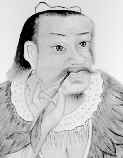
Over the centuries there have been many individuals who contributed to the founding and development of Chinese medicine. Legend has it that the first individual was Shennong, who is often referred to as the Father of Oriental Medicine. He reigned in China for 140 years from 2838 – 2698 BC. Not only did he discover the use of many herbs, but he also taught the people how to develop the land for agricultural use. He was responsible for the earliest writings on TCM which is referred to as the Shennong Bencao Jing or The Divine Farmers’ Herb-Root Classic.
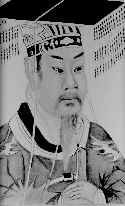
Another important individual was Huang Di, the Yellow Emperor, who lived for a hundred years from 2698 – 2598 BC. He supposedly wrote the Nei Jing or Cannon of Medicine, also referred to as the Yellow Emperor’s Inner Classic (Huang Di Nei Jing). This work has been attributed to the Warring States Period (475 – 221 BC). It was thought that Huang Di, the legendary figure, compiled the initial research which was passed on verbally, expanded over time, and then codified into what it eventually became. The book is divided into two parts, the first of which is called Simple Questions (Su Wen) and is a dialogue between the Yellow Emperor and his minister Qi Bo on the topic of medicine. The second part is referred to as the Spiritual Axis (Ling Shu) and refers more to the topic of acupuncture. This work has been translated into English and is a required reading for students of Oriental medicine. Huang Di is also credited for having invented nine different kinds of needles used in ancient China for acupuncture. The style of needle used predominantly in acupuncture today is a development of one of those needles designed by Huang Di.
Many people in the West think of only acupuncture as Oriental medicine. In actuality, acupuncture is only one part of Oriental medicine. Traditional Chinese Medicine (TCM), as we know it today, is composed of Chinese herbology, acupuncture, tui na (manipulation), qi gong (breathing exercises to develop internal energy), and taiji quan (tai chi chuan) (develop internal energy through exercise). It is believed that each aspect of Oriental medicine had a separate origin in the vastness of China. According to some ancient records, acupuncture using stone and flint needles originated in the Eastern part of the country, moxibustion originated in the Northern part where it was cold, herbology originated in the Western part and breathing exercises originated in the middle part of the country. The blending of these arts into a powerful form of medicine is truly outstanding.
Zhou Dynasty (1121 – 249 BC)
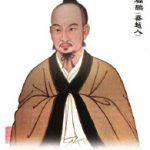
The Zhou Dynasty was one of the most glorious dynasties of China, and has often been referred to as the “Age of Philosophy” for it was this time period that such notable philosophers as Confucius (Kong Fuzi) (Confucianism) and Lao Zi (Taoism) made their great philosophical contributions.
The most prominent acupuncturist of this time was Bian Que (407 – 310 BC) whose real name was Qin Yueren. He was the first to effectively use pulse diagnosis in determining the pattern of a disease. He also formulated the four basic diagnostic methods of observation, listening, questioning and palpitation that are still used today by practitioners of Traditional Chinese Medicine (TCM).
Han Dynasty (206 BC – 221 AD)
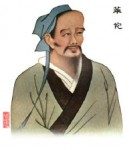

During this period there were many notable medical practitioners. Tsang Kung (? – 180 AD) who was the first to systematically record patient notes to determine future predictions of patient’s recovery. Hua Tuo (110 – 207 AD) has the distinction of being called the “God of Surgery” for his work with surgery and anesthesia. Zhang Zhongjing (142 – 210 AD) who wrote the Shang Han Lun (Essay on Typhoid) dealing with diseases pertaining to dampness and coldness.
Jin Dynasty (265 – 581 AD)
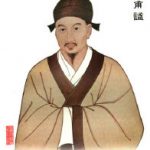
Huangfu Mi (215 – 286 AD) was one of the most important figures in acupuncture during this dynasty. He wrote the Jia Yi Jing which is one of the best texts on acupuncture to date. He recorded three hundred forty-nine points, the location of each point, method of location, needle depth, etc. Today there are three hundred sixty-one acupuncture points on the classical meridian system and over a thousand extra points. Thus by the Jin Dynasty ninety-seven percent of the acupuncture points on the meridian system were known and already in use. It was during this dynasty that acupuncture spread from China to Korea and Japan.
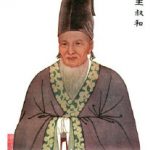
Wang Shuhe (180 – 270 AD) was the greatest authority of his time in the use of the pulses in diagnosing diseases. His book the Mai Jing (Pulse Classic) is a work of ten volumes and is considered the standard work on the subject. Pulse diagnosis is a standard procedure used by practitioners of Oriental medicine. To evaluate the imbalance of energy in the body the practitioner would feel the differences in the quality of the beats of the radial pulses. The pulses help to determine how to treat the patient’s underlying problem.
Sui Dynasty (589 – 618 AD)
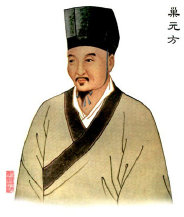
During this period, one individual stood out as making a significant contribution to Chinese medicine. His name was Chao Yuanfang (550 – 630 AD), who edited and compiled the first medical book to classify symptoms of disease. This book consisted of fifty volumes with some one thousand seven hundred and twenty entries of signs and symptoms of disease.
Tang Dynasty (619 – 907 AD)
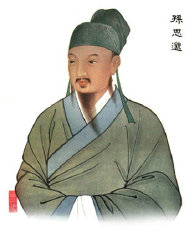
During this dynasty, Wang Shou was one of the leading contributors to Traditional Chinese Medicine. He published The Secrets of External Treatments which was a work of 1140 chapters within forty volumes describing therapeutic methods, medicinal prescriptions and techniques of nursing care.
Another leading contributor was Sun Simiao (581 – 673 AD). He was an eminent Taoist who wrote The Thousand Golden Remedies, which included acupuncture points, dieting, fasting, and physical exercise. He formulated the Ah Shi points which were spontaneous sore points on the body that are considered as extra acupuncture points. This was the beginning of what Western physical therapy refers to as trigger points.
Song Dynasty (960 – 1278 AD)
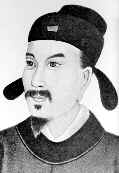
During the Song Dynasty the government promoted the development of medicine and encouraged individuals to learn medicine. Through the government’s efforts there were many great acupuncturists. One of the most famous was Wang Weiyi (11th century) who wrote the Illustrated Classics of the Bronze Statue, which was an accumulation of all the known acupuncture points up to that time. It was a companion text to a bronze lifelike statue that he had cast showing all the points.
The bronze statue was a teaching tool for students. The hollow statue had holes where the acupuncture points were supposed to be. Wax covered the entire statue concealing the holes and making them invisible. The statue was filled with water and a student would be tested on his point location skills. If he inserted the needle correctly into one of the holes in the bronze statue, water would pour forth in a tiny stream; if he was wrong then nothing happened.
Ma Danyang was another prominent figure during this dynasty. He discovered that there were twelve major acupuncture points that could be used to treat most medical problems. It sounds easy to only insert twelve needles into the body to solve every problem. In actuality, it was not just the location of the points but also which points were used together and what type of energetic stimulation was used at each point. They are referred to as Ma Dan-Yang points.
Yuan Dynasty (1206 – 1368 AD)
The leading figure of this area was Hua Shou (13th century). He was acknowledged as the one who determined that the Du Mai (Governing Vessel meridian) and the Ren Mai (Conception Vessel meridian) were mono meridians. Prior to his discovery it was believed that each meridian existed bilaterally along the body. Thus, there were twelve meridians on the right side of the body and the same twelve on the left side of the body. He discovered that the Ren meridian ran upwards along the center of the front of the body and the Du meridian ran upwards along the center of the back of the body.
Ming Dynasty (1368 – 1662 AD)
The first exposure that Westerners had to acupuncture came in the 17th century when the Jesuit priests went to China. Some of the priests learned Chinese and later learned the basics of acupuncture. When they returned to Europe they took their skills with them and translated some of the Chinese texts. The term acupuncture was derived from the Latin words acus (needle) and punctura (pricking).
There were many prolific writers during this era. Most of the writings were an elaboration of what came before. The most prolific of these writers was Weng Chi who wrote over ten different works on acupuncture and Chinese medicine.
Qing Dynasty (1662 – 1911 AD)
The most important contributor to Chinese medicine during this period was Wu Qian (18th Century). His works were and still are essential medical reference books in China for those who study Chinese medicine.
Chinese Medicine in the United States
Undoubtedly, acupuncture and more specifically Traditional Chinese Medicine (TCM) arrived in the United States with the influx of Chinese to the West coast. Wherever there was a significant population of Chinese there would almost always be someone who had the rudimentary training in Chinese medicine. Very seldom were the skills of medicine shown or passed onto others outside of the Chinese communities. It wasn’t until the last fifty years that acupuncture has started to develop in this country. The real emergence of acupuncture came about in the 1970s when President Nixon made his famous trip to China. Today there are approximately forty schools and colleges in the United States devoted to teaching Oriental medicine. In Texas, the practice of Oriental medicine is regulated by the Texas State Board of Acupuncture Examiners. There are similar regulatory bodies in other states.

